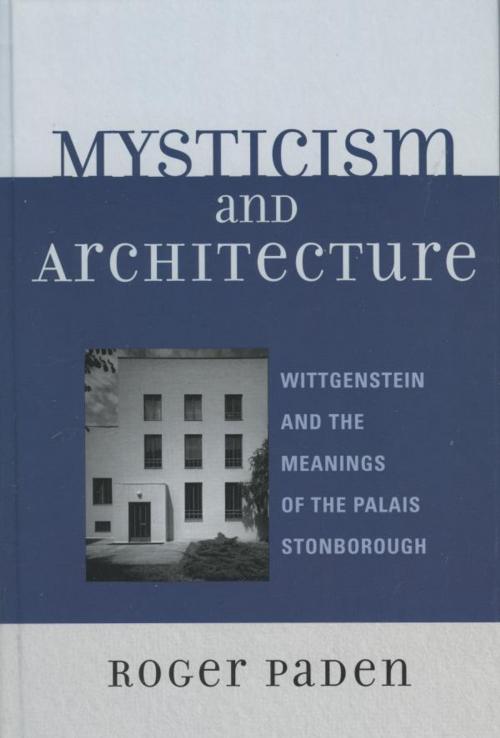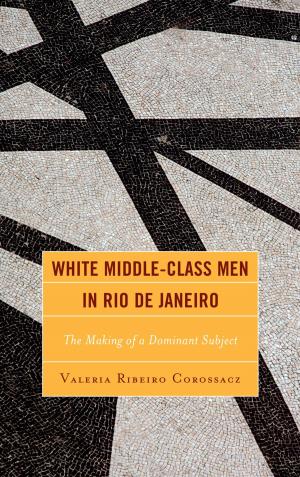Mysticism and Architecture
Wittgenstein and the Meanings of the Palais Stonborough
Nonfiction, Art & Architecture, Architecture, Religion & Spirituality, Philosophy| Author: | Roger Paden | ISBN: | 9780739157985 |
| Publisher: | Lexington Books | Publication: | January 11, 2007 |
| Imprint: | Lexington Books | Language: | English |
| Author: | Roger Paden |
| ISBN: | 9780739157985 |
| Publisher: | Lexington Books |
| Publication: | January 11, 2007 |
| Imprint: | Lexington Books |
| Language: | English |
Mysticism and Architecture: Wittgenstein and the Palais Stonborough is a multi-disciplinary study of the Viennese palais that the philosopher Ludwig Wittgenstein helped design and build for his sister shortly after he abandoned philosophy for more practical activities and during the period that supposedly separates his 'early' from his 'late' philosophy. Weaving together discussions of a number of social, political, and cultural developments that helped to give fin-de-si_cle Vienna its character — including the late modernization of Austrian society, industry, and economy; the construction of Vienna's Ringstrasse; the slow decay of the Hapsburg monarchy; and the failure of Austrian liberalism; as well as Tolstoy's religiously-based ethical views; Adolf Loos's critique of architectural ornament; Karl Kraus's analysis of Vienna's decadence; Kierkegaard's and Nestroy's views on the importance of indirect communication; Otto Weininger's theory of the nature and duty of genius; Camillo Sitte and Otto Wagner's dispute over good urban form; Schopenhauer's aesthetic theories and his 'Eastern' philosophy of life; and Russell and Frege's philosophical and logical theories — the book presents a philosophical biography of Wittgenstein reminiscent of, but substantially different from, Janik and Toulmin's Wittgenstein's Vienna. This philosophical biography underpins a new interpretation of the house which argues that the house belongs to neither architectural Modernism, nor Postmodernism, but is instead caught between those two movements. This analysis of the house, in turn, grounds a new interpretation of Wittgenstein's philosophical works that emphasizes their mystical nature and practical purpose. Finally, this interpretation shows the unity of these works while simultaneously suggesting an underlying flaw; namely, that they arise from two fundamentally-opposed worldviews present in Vienna during Wittgenstein's youth, 'aesthetic modernism' and 'critical modernism.'
Mysticism and Architecture: Wittgenstein and the Palais Stonborough is a multi-disciplinary study of the Viennese palais that the philosopher Ludwig Wittgenstein helped design and build for his sister shortly after he abandoned philosophy for more practical activities and during the period that supposedly separates his 'early' from his 'late' philosophy. Weaving together discussions of a number of social, political, and cultural developments that helped to give fin-de-si_cle Vienna its character — including the late modernization of Austrian society, industry, and economy; the construction of Vienna's Ringstrasse; the slow decay of the Hapsburg monarchy; and the failure of Austrian liberalism; as well as Tolstoy's religiously-based ethical views; Adolf Loos's critique of architectural ornament; Karl Kraus's analysis of Vienna's decadence; Kierkegaard's and Nestroy's views on the importance of indirect communication; Otto Weininger's theory of the nature and duty of genius; Camillo Sitte and Otto Wagner's dispute over good urban form; Schopenhauer's aesthetic theories and his 'Eastern' philosophy of life; and Russell and Frege's philosophical and logical theories — the book presents a philosophical biography of Wittgenstein reminiscent of, but substantially different from, Janik and Toulmin's Wittgenstein's Vienna. This philosophical biography underpins a new interpretation of the house which argues that the house belongs to neither architectural Modernism, nor Postmodernism, but is instead caught between those two movements. This analysis of the house, in turn, grounds a new interpretation of Wittgenstein's philosophical works that emphasizes their mystical nature and practical purpose. Finally, this interpretation shows the unity of these works while simultaneously suggesting an underlying flaw; namely, that they arise from two fundamentally-opposed worldviews present in Vienna during Wittgenstein's youth, 'aesthetic modernism' and 'critical modernism.'















